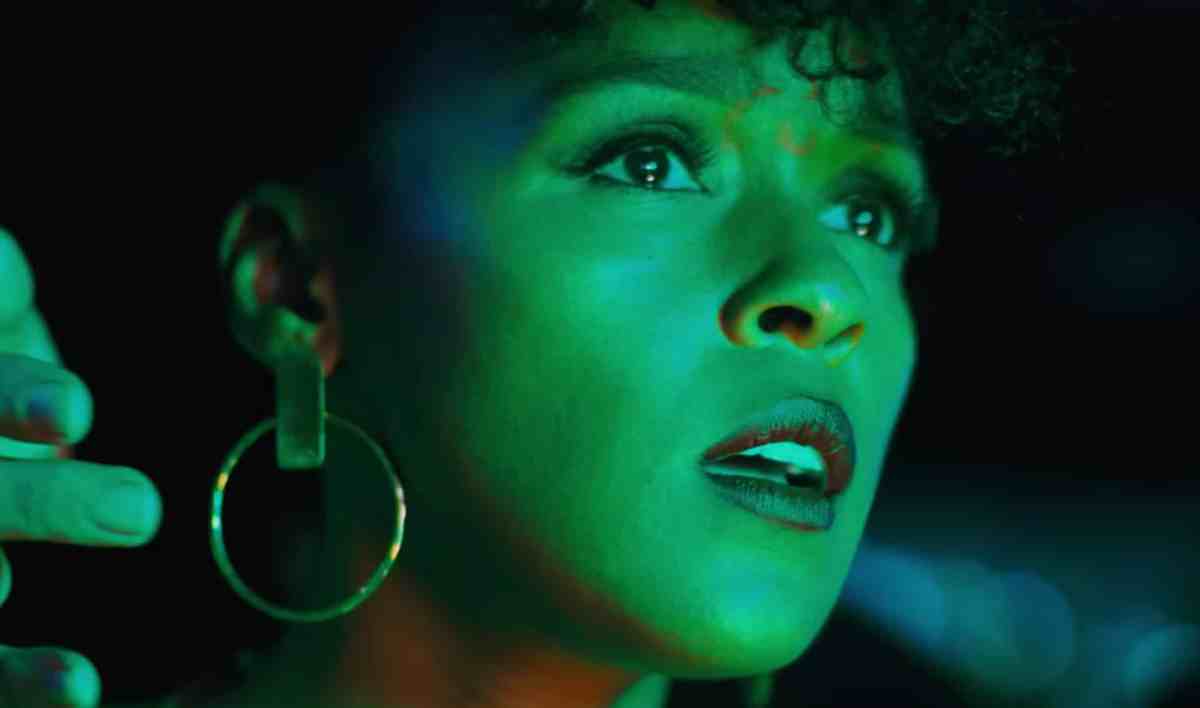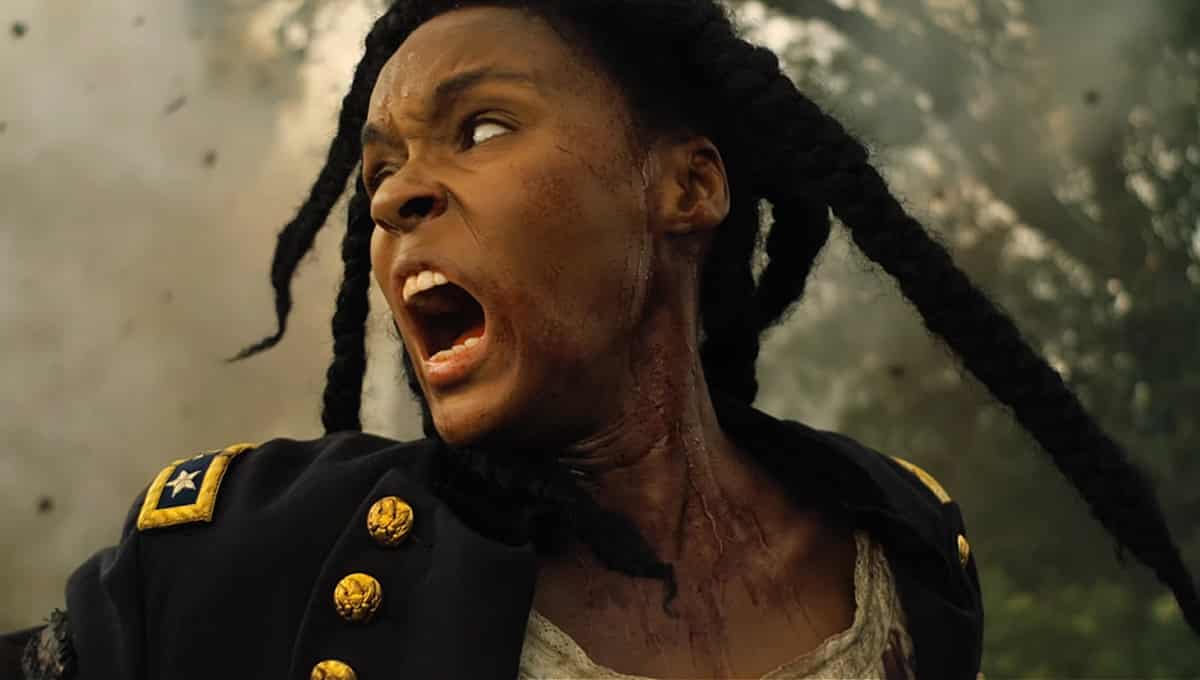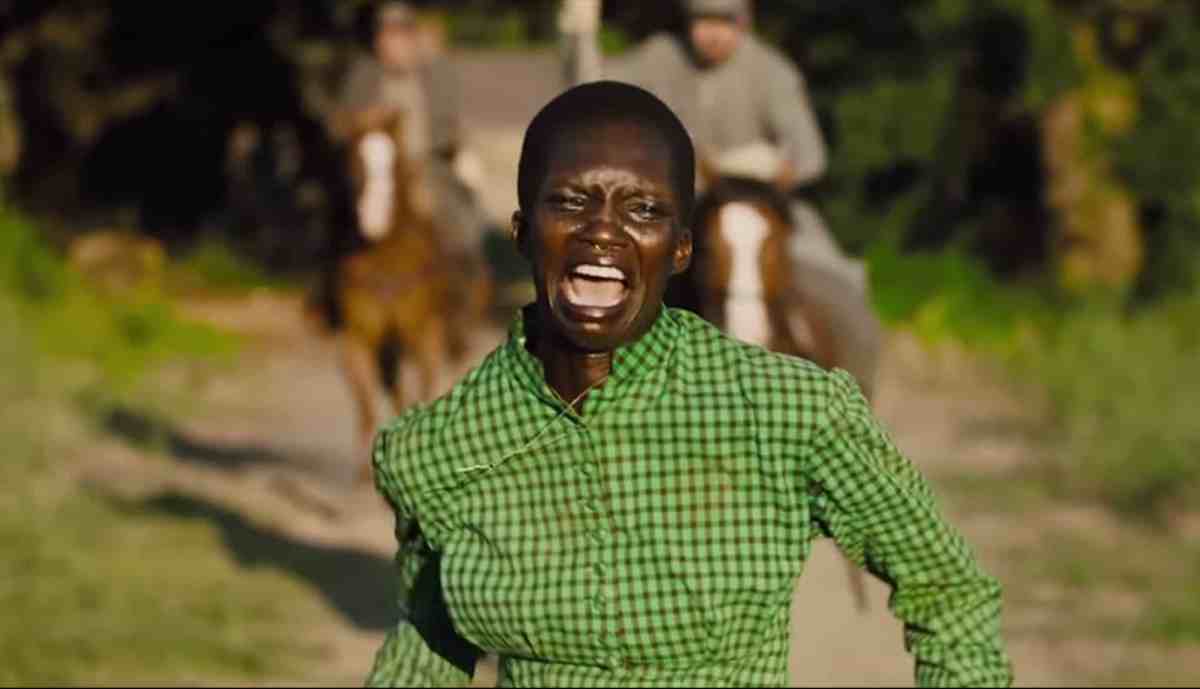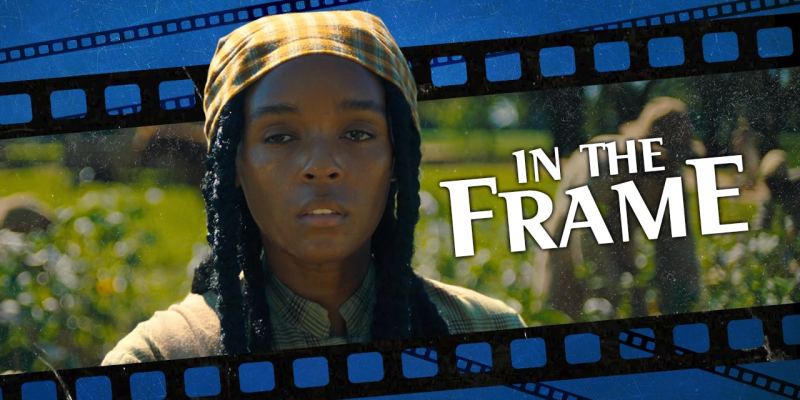This article contains complete spoilers for Antebellum and allusions to spoilers in The Sixth Sense, The Village, Gone Girl, and Shutter Island.
What makes for a good twist?
When Antebellum was released two weeks ago, a large part of the publicity around the film amounted to “don’t give away the twist.” Of course, using spoilers as marketing tools – to create a sense of urgency and demand – is nothing new. However, as reviews for Antebellum filtered out, it became very obvious why the marketing was so eager that audiences shouldn’t reveal too much about the mechanics of the movie. Antebellum was nothing but the twist.
Antebellum has a classical three-act structure, albeit jumbled. The movie opens with a sweeping long take through a Southern plantation populated by Confederate soldiers and slaves, before focusing on a young slave named Eden (Janelle Monáe) who is slowly plotting an escape. The movie’s second act then jumps away to focus on modern-day sociologist and public speaker Veronica Henley (also Monáe). The central tension of the film relates to how Eden and Veronica are related.
There are many interesting ways that Antebellum might explore or develop the connection between Eden and Veronica. Various commentators have noted the thematic overlap between Antebellum and Octavia Butler’s 1979 novel Kindred. Writer and director Gerard Bush has explained that the idea came to him in a “dream state,” and that arguably bleeds through into the film, with Veronica even suggesting, “My nana used to say our ancestors haunt our dreams to see themselves forward.”
Unfortunately, Antebellum follows the path of least resistance. In a twist many predicted from the trailer, Eden is Veronica and the plantation at the start of the film exists as a modern nostalgic recreation of the Confederacy. This is not a bad hook for a movie. The film opens with a quote from William Faulkner, “The past is never dead. It’s not even past.” The film believes in this thesis strongly enough that a character even restates it in the middle of the film to underscore the point.
There is a lot to explore in that idea, particularly America’s troubled relationship to the Civil War. The ongoing debate about Confederate monuments is the most obvious example. It’s notable that many of these monuments weren’t erected in the immediate aftermath of the Civil War, but instead during the Jim Crow era. North Carolina has erected 35 such monuments to the Confederacy since 2000. This is to say nothing of other cultural monuments to the Confederate South.
The structure of Antebellum prevents it from exploring this idea. Confirmation that the plantation exists in the present day comes late enough in the movie that it is primarily followed by action scenes. Structurally, the jump backwards (which looks like a jump forward) between the first and second acts serves no greater purpose than to obfuscate the plot and delay the central revelation so that by the time the movie acknowledges what is happening, the credits are ready to roll.
To be fair, there are practical reasons for structuring the movie in this way. Narratively, Antebellum also handily places the standard horror movie opening act of “30 minutes with strangers, waiting for the horror to start” in the middle of the movie rather than at the beginning. Given that this is often the most frustrating part of a mediocre horror movie, it is a savvy choice. However, it does not excuse how severely the prioritizing of the twist undercuts Antebellum.

At Forbes, Scott Mendelson argued that the movie had “a great idea for a slavery-specific horror movie but saved it for a plot twist instead of the main story.” At IndieWire, David Ehrlich noted that Antebellum’s “contorted shape is designed to get the most out of its twist.” At The Wrap, Steve Pond complained that the film had “a central twist that’s worthy of a bad M. Night Shyamalan movie.” That might sound unfair, but Antebellum invites the comparison. Its central twist invokes The Village.
Shyamalan is an instructive comparison here. The director went from being praised as “the next Hitchcock” to being a punchline on Robot Chicken. Shyamalan’s reliance on big story-upending twists severely undercut his reputation, making it hard to watch movies like The Village or The Happening as anything more than vehicles for absurd conceptual swerves. Shyamalan has begun rebuilding his reputation as a credible filmmaker, but his name remains internet shorthand for bad twists.
Twists are hard. Any movie with a major twist effectively has to be two different movies: the movie that the audience sees blind, and the movie that the audience rewatches knowing the twist. A good movie with a good twist needs to function as two distinct movies that are both good on their own terms: as a movie that is engaging and fun to figure out for a first-time audience and a movie that rewards returning viewers who already know the ending. This is a challenge.

Indeed, it’s arguable that for any movie hoping to make a lasting mark on pop culture, being that second movie is more important than being the first. Modern audiences approaching films like The Empire Strikes Back, Planet of the Apes, Psycho, or even Citizen Kane have likely absorbed the central revelations through pop cultural osmosis, which means that they have to function as masterpieces in their own right even without the catharsis of climactic revelation.
However, the movies with the best twists work on both levels. There is a reason that Shyamalan accrued so much goodwill with The Sixth Sense. The first time that the audience watches The Sixth Sense, it is a compelling existential mystery with a powerhouse conclusion. The second time that the audience watches The Sixth Sense, it becomes a much more emotional ghost story about the longing for human connection. Both are great films.
Martin Scorsese’s Shutter Island works both as a paranoid thriller about a federal marshal with a slipping grip on reality and as a grand tragedy about guilt and insanity in the wake of the Second World War. David Fincher’s Gone Girl works whether the audience is awkwardly figuring out the mystery along with Nick Dunne (Ben Affleck) on first viewing or appreciating the irony as he clumsily stumbles into a variety of carefully rigged traps on subsequent watches.

The best twists are structured so the two movies nest inside one another, developing organically from the same themes and narrative. The best twists feel at once unpredictable and inevitable, a logical extrapolation of the movie’s big ideas in interesting directions. Both movies within The Sixth Sense are about the difficulty of communicating with others, so literalizing that idea by having one character exist out of step with the world around him is a perfect extension of that theme.
The twist in Antebellum is arguably the only part of the movie that does work, because it ties together that theme of how the past remains unresolved in a very literal manner. It’s telling that so many critics (including our own) were eager to talk about the movie’s twist, even with its cast and crew, because there’s nothing else to talk about. The twist is a hinge between two different movies, but Antebellum doesn’t have anything to hinge between.
Antebellum doesn’t work on any viewing. On first viewing, any genre-savvy audience member will likely have a pretty good grasp on the twist within the first 20 minutes, making the rest of the movie a slog until that guess is ultimately confirmed. On subsequent viewings, the efforts to conceal the twist only obfuscate the film’s attempts to explore genuinely interesting ideas in a compelling manner. Even the simple act of restructuring the film chronologically might help clarify it.
